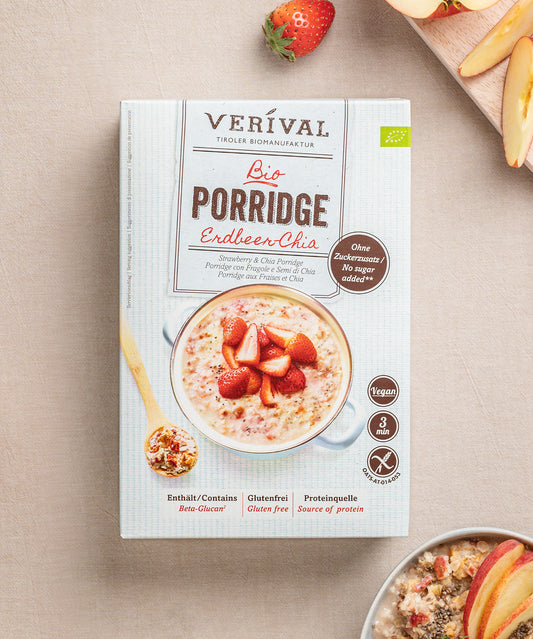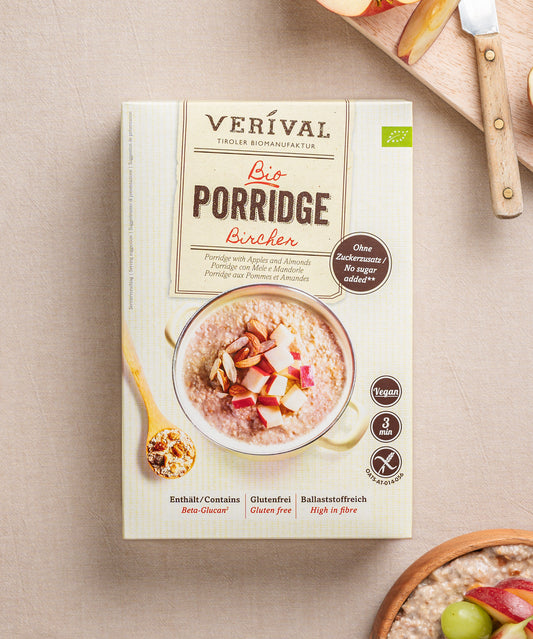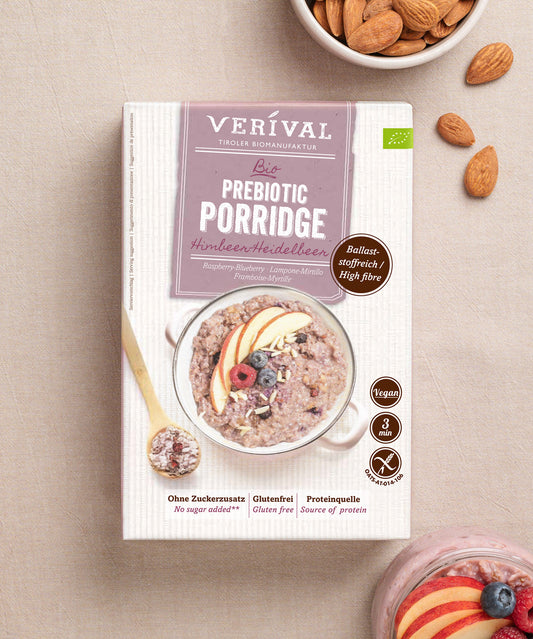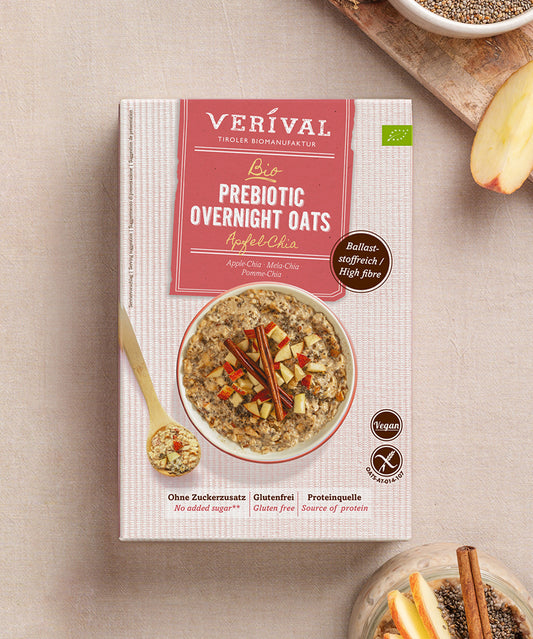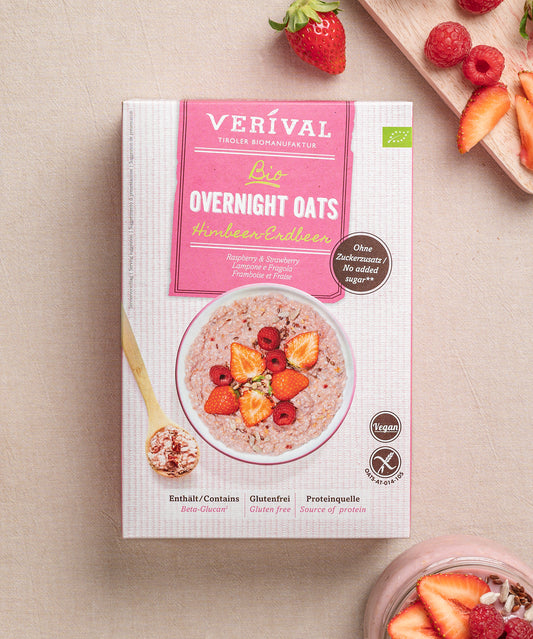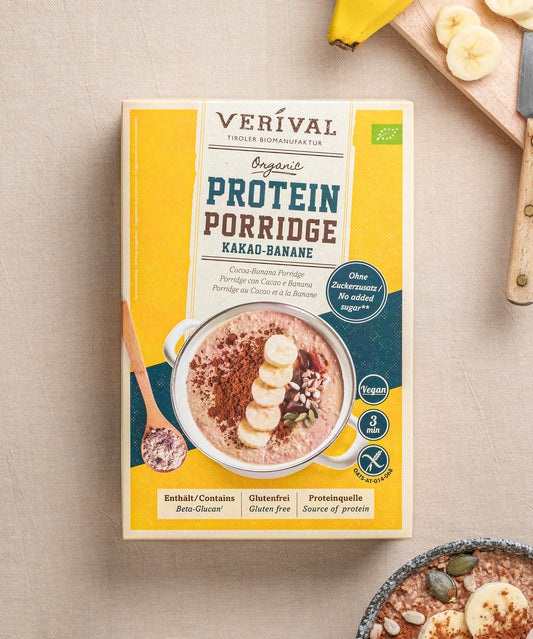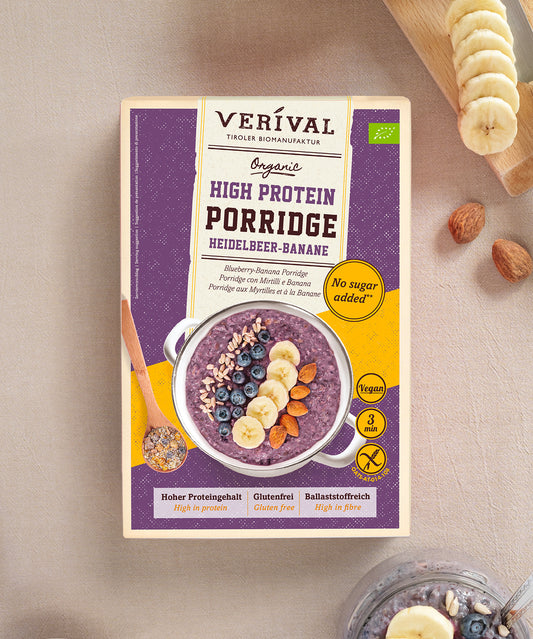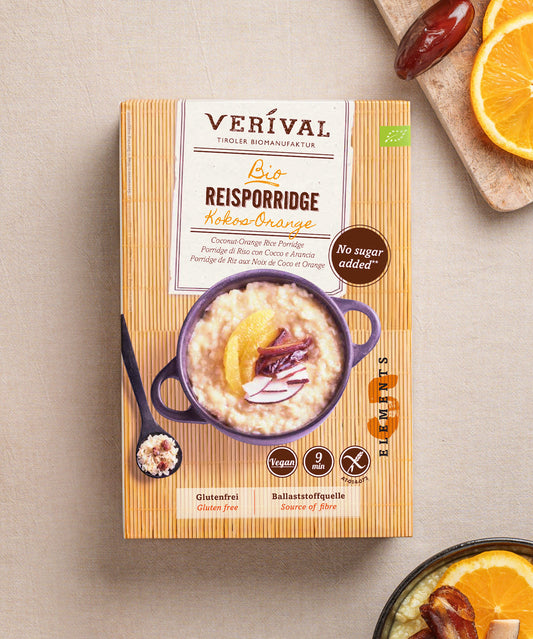Cholesterol is an essential component of our cells, but not all types of cholesterol are the same. Particular attention is paid to HDL cholesterol, also known as “high density lipoprotein”. In this comprehensive blog post, we will take a deep dive into the world of HDL cholesterol, its importance in the body, its connection to cardiovascular diseases and the factors that influence HDL cholesterol levels.
Discover Verival porridge here
What is HDL cholesterol?
HDL cholesterol, or high-density lipoprotein, is a crucial component in the complex network of human fat metabolism. Lipoproteins are molecular complexes that contain fat and protein and serve as a means of transporting cholesterol. HDL cholesterol is therefore also referred to as the “good” cholesterol.
Definition of HDL cholesterol as “high-density lipoprotein”
It is composed of a higher proportion of proteins compared to LDL cholesterol. This structure gives it a higher density, which enables it to absorb excess cholesterol from the tissues and transport it to the liver. This is where this vital molecule is excreted or reused.
Difference between HDL and LDL (low density lipoprotein) cholesterol
A key difference between HDL and LDL cholesterol is their function in the body. While HDL cholesterol tends to transport excess cholesterol from cells to the liver, LDL cholesterol has the opposite task. It transports cholesterol from the liver to the cells, where it is needed for various functions. LDL cholesterol is often referred to as “bad” cholesterol because an excess of it in the blood vessels can lead to deposits that narrow the arteries.
In summary, HDL cholesterol is not just a passive carrier of cholesterol, but is actively involved in fat metabolism. It acts as a guardian of vascular health by removing excess cholesterol and thus protecting against atherosclerosis. A balanced ratio of HDL and LDL cholesterol is essential for maintaining healthy cholesterol levels and preventing cardiovascular disease.
The role of HDL cholesterol in the body
HDL cholesterol, also known as high-density lipoprotein, plays an indispensable role in the complex network of human fat metabolism. Its importance extends beyond the simple function of a cholesterol carrier, and its activities are crucial for maintaining a healthy metabolism.
The importance of HDL cholesterol for fat metabolism
HDL cholesterol plays a key role in fat metabolism by actively participating in the transport of cholesterol. Unlike LDL cholesterol, which transports cholesterol to cells, HDL cholesterol takes up excess cholesterol from cells and transports it to the liver. Here, the cholesterol is either excreted or reused for the synthesis of bile acids, which in turn are essential for the digestion of fats.
Function of HDL in removing excess cholesterol from body cells
HDL cholesterol acts as an efficient “cleaning service” for cells. It interacts with cell membranes and takes up excess cholesterol that is not needed by cells. This process is crucial to prevent the accumulation of cholesterol in cells, which in turn reduces the risk of atherosclerosis and other cardiovascular diseases.
In addition, HDL-cholesterol plays a crucial role in the formation of so-called chylomicrons, which are responsible for the transport of triglycerides through the bloodstream. The effective removal of excess cholesterol from cells thus not only contributes to vascular health, but also has positive effects on the body's overall fat metabolism.
Overall, the active role of HDL cholesterol in lipid metabolism shows that it is not just a passenger in the bloodstream, but an essential player in helping to maintain the balance of blood lipids and thus promoting cardiovascular health.
Breakfast without sugar is very healthy - discover our range here!
HDL cholesterol and cardiovascular disease
The link between HDL cholesterol, the so-called “good” cholesterol, and cardiovascular disease is of central importance. This section highlights the influence of HDL cholesterol on the risk of these diseases and the protective effect of high HDL levels.
Relationship between HDL cholesterol and risk of cardiovascular disease
Several studies have shown a clear relationship between HDL cholesterol levels and the risk of cardiovascular disease. Low HDL cholesterol is often associated with an increased risk, while higher HDL levels can offer protection. This relationship is due to the fact that HDL cholesterol actively removes excess cholesterol from blood vessels, preventing the build-up of deposits and thus reducing the risk of hardening of the arteries (atherosclerosis).
How high HDL levels can protect against cardiovascular disease
High HDL levels are considered protective because they have several positive effects on the cardiovascular system. First, the cholesterol promotes reverse cholesterol transport, a process in which excess cholesterol is transported from the tissues to the liver. This mechanism not only prevents the formation of plaques in the blood vessels, but also stabilizes existing deposits.
Secondly, HDL cholesterol has an anti-inflammatory and antioxidant effect. Inflammatory processes play a key role in the development of cardiovascular diseases, and HDL cholesterol has the potential to reduce these inflammations and thus minimize the risk of secondary diseases.
Overall, the protective role of high HDL levels makes it clear that this type of cholesterol is more than just a means of transport. It acts as an active ally that strengthens the cardiovascular system and protects against the serious consequences of cardiovascular disease. Therefore, promoting healthy HDL cholesterol levels emphasizes the importance of preventing cardiovascular disease.
Healthy cholesterol is found in various foods
The optimal HDL cholesterol level
Maintaining healthy HDL cholesterol levels is crucial to keeping your cardiovascular system in good health. Here, we explain the ideal levels and how they are measured in the laboratory to provide an accurate assessment of heart health.
Explanation of ideal HDL cholesterol levels
The ideal HDL cholesterol levels may vary slightly depending on individual factors. However, HDL cholesterol levels above 60 milligrams per deciliter are generally considered favorable. Values between 40 and 60 milligrams per deciliter are considered acceptable, while values below 40 milligrams per deciliter are considered low. Higher HDL levels are desirable because they are associated with a lower risk of cardiovascular disease.
Explanation of laboratory values and measurement of HDL cholesterol levels
The measurement of HDL cholesterol levels is done by a blood test. The laboratory values indicate the level of this lipoprotein-containing cholesterol in the blood. During a routine blood test, the various cholesterol fractions, including HDL cholesterol, are analyzed.
The unit of measurement for HDL cholesterol levels is milligrams per deciliter of blood. It is important to note that the interpretation of the results should be done by the treating physician, as individual health conditions and other factors must be taken into account.
Regularly checking HDL cholesterol levels is crucial to identifying possible risks of cardiovascular disease at an early stage. A targeted look at these values makes it possible to take preventive measures and, if necessary, to adjust one's lifestyle to promote the balance of blood lipids.
In summary, accurate measurement of HDL cholesterol is an important part of cardiological diagnostics. Having an appropriate HDL cholesterol level is not only a measure of heart health, but also a guide to individual preventive measures and a healthy lifestyle.
Factors that influence HDL cholesterol levels
HDL cholesterol levels are influenced by various factors, ranging from lifestyle habits to genetic factors. In this section, we take a closer look at the influences that can affect “good” cholesterol.
Influence of lifestyle factors such as diet and lack of exercise on HDL levels
Nutrition: The way we eat plays a central role in regulating HDL cholesterol levels. A diet rich in unsaturated fats, omega-3 fatty acids and dietary fiber helps increase HDL cholesterol. Fish, nuts, whole grain products and olive oil are particularly beneficial. In contrast, a diet high in saturated and trans fats can lower HDL levels.
Lack of exercise: Regular physical activity has a positive effect on HDL cholesterol levels. Not only does exercise increase the production of HDL cholesterol, it also helps to improve overall lipid metabolism. For optimal results, a combination of aerobic and strength training is recommended.
Discussion of genetic factors and lipid disorders
Genetic factors: The predisposition to high HDL cholesterol levels is partly genetic. Some people tend to have naturally higher HDL levels, while others may have genetically lower levels. It is important to take these genetic influences into account, especially if HDL levels are low despite healthy lifestyle habits.
Lipid metabolism disorders: Disorders in lipid metabolism can also affect HDL cholesterol levels. In particular, conditions such as diabetes mellitus or lipid metabolism disorders can disrupt the normal regulatory mechanisms, leading to changes in HDL levels. In such cases, close medical supervision is required to take preventive measures and minimize the risk of cardiovascular disease.
Overall, considering these factors illustrates the complexity of the regulation of HDL cholesterol levels. A conscious lifestyle adjustment, based on a balanced diet and sufficient physical activity, can have a positive influence on HDL levels and thus help to promote heart health.
You want to eat more protein? This way!
HDL cholesterol and other blood lipids
The relationship between HDL cholesterol, triglycerides and total cholesterol is often underestimated. A balanced ratio is crucial to minimize the risk of cardiovascular disease.
Prevention and management of low HDL levels
It is possible to increase HDL cholesterol through diet and lifestyle. In addition, drugs such as statins are often used to treat dyslipidemia.
HDL cholesterol in clinical practice
In cardiology, HDL cholesterol plays a key role in the treatment of coronary heart disease. Physicians interpret HDL values and take them into account in individual treatment plans.
Summary and conclusions
In conclusion, we emphasize the importance of balanced cholesterol levels for the cardiovascular system. High HDL levels help to prevent cardiovascular disease, while low levels can increase the risk.
In conclusion, we can see that HDL cholesterol is not just a simple laboratory value, but plays a key role in our heart health. A conscious lifestyle, healthy diet and regular exercise are the key to maintaining the balance of our blood lipids and effectively preventing cardiovascular diseases.
Frequently asked questions
What is HDL cholesterol and why is it important?
HDL cholesterol, also known as “high density lipoprotein”, is a type of cholesterol in the blood that is considered “good” cholesterol. It helps remove excess cholesterol from blood vessels, thus preventing atherosclerosis and cardiovascular disease.
How can I increase my HDL cholesterol level?
You can increase your HDL cholesterol level by engaging in regular physical activity, eating a healthy diet rich in unsaturated fats, such as those found in nuts and fish, and reducing your consumption of saturated fats.
What role does HDL cholesterol play in cardiovascular disease?
HDL cholesterol plays a protective role in cardiovascular disease because it helps remove cholesterol from the arteries, preventing the build-up of plaques that can lead to atherosclerosis and other heart conditions.
What are the normal levels of HDL cholesterol?
An HDL cholesterol level of 60 milligrams per deciliter (mg/dL) or higher is considered protective against heart disease. However, levels below 40 mg/dL for men and below 50 mg/dL for women are considered a risk factor.
Can a change in lifestyle affect HDL cholesterol levels?
Yes, lifestyle changes such as eating healthy, exercising regularly, losing weight and quitting smoking can positively influence your HDL cholesterol level and thus reduce your risk of heart disease.


